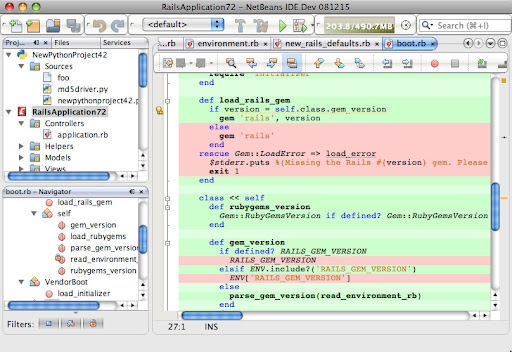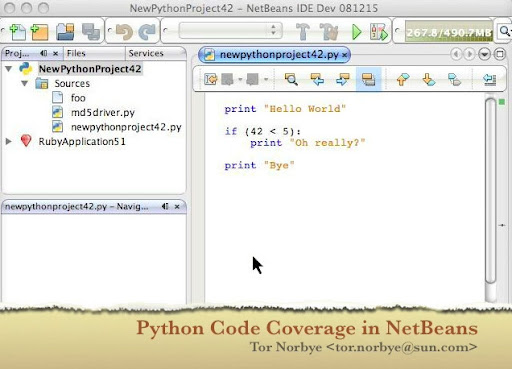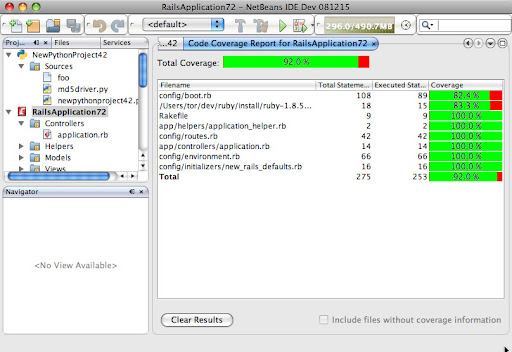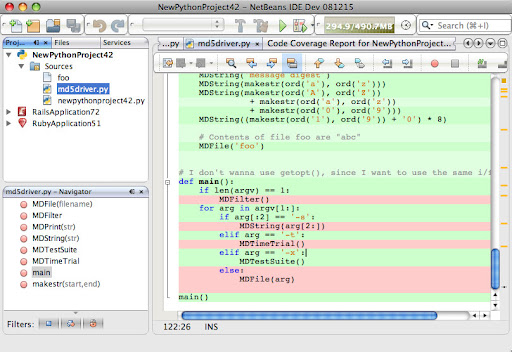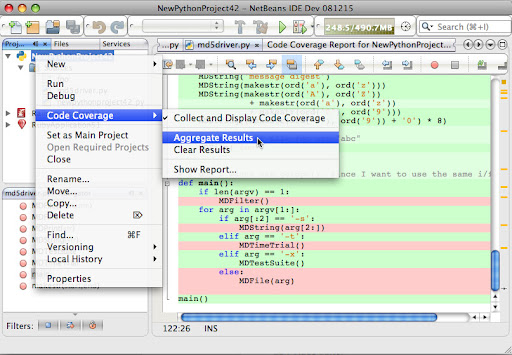WARNING: This blog entry was imported from my old blog on blogs.sun.com (which used different blogging software), so formatting and links may not be correct.
In order to get code coverage to work seamlessly in the presence of the Rake build tool, I had to do some pretty ugly tricks - a lot of path manipulation that surely won't work on Windows. Rather than just getting bug reports, I'll need to debug through it to find the troublespots and fix them.
I don't have a Windows machine. I have a Solaris desktop box, and a Mac laptop. And since I don't have any short term plans to go in to the office (I work from home most of the time) I don't want to wait to look into this until my next chance to stop by a computer lab with Windows machines.
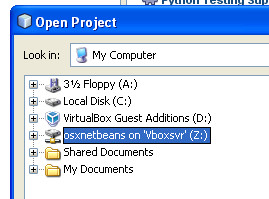
So, I decided to dust off the VirtualBox instance I installed and tested a while back. Back then, it worked fine - but was a bit painful to use. Actually, it was my fault. I never went and "finished" my installation. Turns out, after installing Windows on the virtual machine, there is some additional software shipped with VirtualBox that can be installed into Windows to make things work more smoothly.
For example, a special mouse driver makes the Mac mouse also work as the Windows mouse. There's support to share file systems. This is a huge benefit. I simply mapped my working source tree that I have already checked out, edited and built, as a new Windows drive! I didn't have to go and install Mercurial, Python, check out the whole NeBeans source tree, build it, etc. I could simply open up drive Z:, and run the NetBeans IDE from within Windows!
Another cool thing these special tools add is "seamless mode". I'm running the Windows applications running as if they are regular Mac applications on my Mac desktop! So I can debug through my Windows instance of NetBeans while at the same time having my Mac mail and instant messaging programs part of the screen. Look at the below screenshot (click for full size) -- I have the Mac doc on the left, and the Windows doc on the bottom - as well as a mixture of Mac and Windows (uhm) windows on the desktop!
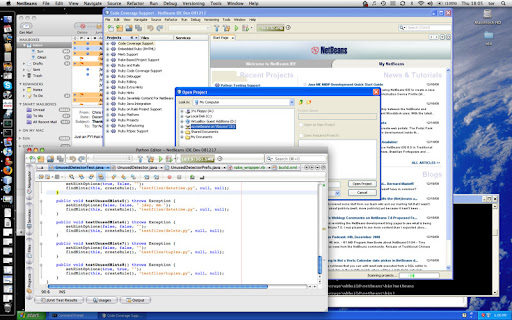
There's my mailtool again... Last year I
posted a screenshot showing how I had 13,000 unread mails, but plans to finally catch up. I guess I didn't put that high enough up on my priority list. The above screenshot shows how I'm up to 56,000 unread mails now. Ugh. Oh well, at least the number of unread mails addressed directly to me is decreasing.
Wow. Installation was flawless. It's working beautifully. And it's free. And it's open source. Wow. Oh, and it runs on many other platforms as well.
As I wrote this blog entry I looked up the VirtualBox home page to I could link to it, and I discovered a news blurb:
New Dec 17, 2008
VirtualBox 2.1.0 released!
Sun today released VirtualBox 2.1.0, a major update with exciting new features: among them better 64-bit support, hardware virtualization on the Mac, 3D acceleration, easier networking on Windows and Linux plus full VMDK/VHD support including snapshots. See the ChangeLog for a detailed list of changes.
I just installed it and took it for a quick spin, and things are looking great.
P.S. One little tip: Installing the Guest Additions into Windows is easy - there's a menu item in the Device menu, "Install Guest Additions...". I tried it, and it popped up an installer inside Windows. But since I was in the middle of applying service packs to Windows, I dismissed it so I could deal with it after my service pack upgrade reboot. But when I tried it later, it didn't work! Uh oh, is this incompatible with service pack 3 I wonder? Nope, it's much simpler than that. What "Install Guest Additions..." does, is mount a new CD-ROM into Windows. I'm guessing Service Pack 3 turns off auto-run! Probably a security thing. So all I had to do was open the computer folder, and click on the CD-ROM there to run the installer.
Oh, one other tip: The default RAM allocated to the virtual machine is pretty small: 512Mb. In the Settings for the machine you can crank it up bigger - I set it to 2 Gb. That makes the machine run quite a bit faster under load since it's not continually swapping to disk for virtual memory.


